Lead generation is the name of the game for most B2B organizations. The more qualified leads you bring in, the better your chances of securing new customers.
You might be an organization that’s still kickin’ it old-school with cold calls and word-of-mouth referrals. Or maybe your company is more experienced and incorporates paid search to generate leads. All of those tactics can work, but have you considered adding social media to the mix?
Why social media advertising?
For the 3.6 billion people on social media, that’s why. And that number is projected to increase to almost 4.41 billion in 2025. We guarantee you that your B2B audience is among them.
The Content Marketing Institute finds 83% of B2B marketers use social media advertising, and they rank it second in success behind search engine marketing.
A 2020 eMarketer study found B2B professionals believe paid social media is the most effective channel to reach customers.
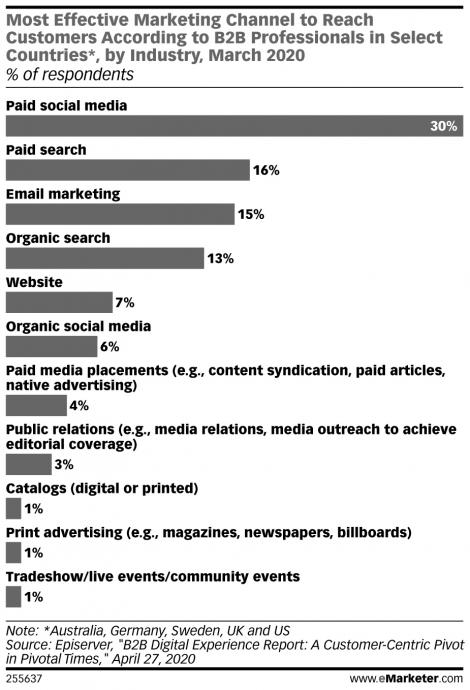
If we’ve convinced you, your next question is probably, “Where do we start?”
Developing a B2B lead generation strategy
At ddm, we approach social media lead generation like any strategic project.
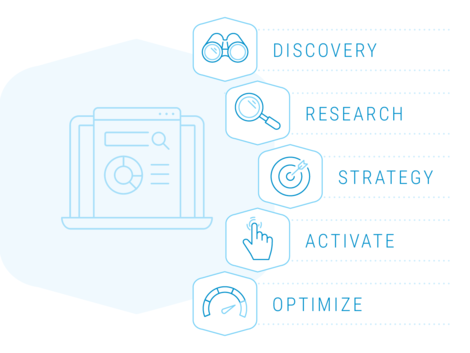
Our process of discovery, research, strategy, activate, and optimize ensures you’re not just throwing darts at a wall. It brings clarity, purpose, and intention to our efforts. Here’s how we approach a social media lead generation strategy, and how you can too.
Discovery
Right from the get-go, we consider how your social media advertising complements your overall company goals. Leads are great, but we strive to connect that metric to larger company initiatives.
Next, we explore what valuable piece of content you can offer customers. It could be a white paper, comprehensive report, event registration, or eBook.
The key is to produce something tangible that will have value to your target audience and draw them in. The asset should be worth giving up an email address for.
From there, think about key messages, timelines, and budget. Depending on your key messages, a certain time of year might be best for your campaign. Setting a budget will help determine how niche your audience targeting needs to be and how long your campaign runs.
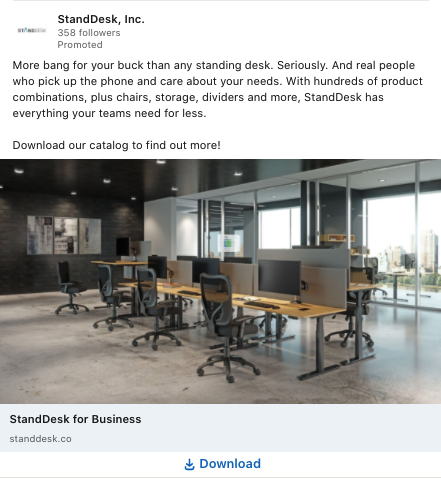
Research
Next, take a deep dive into your potential customers. Consider their demographics and how they consume media. Think about their pain points and how you can address them. Determine which social media platform(s) your audience uses most.
eMarketer found that Facebook was the best social media platform for B2B lead generation in 2019. But maybe your audience spends more time on LinkedIn. LinkedIn itself says 89% of B2B marketers use LinkedIn for lead generation. And it says LinkedIn generates over 2x as many leads as the next highest social channel.
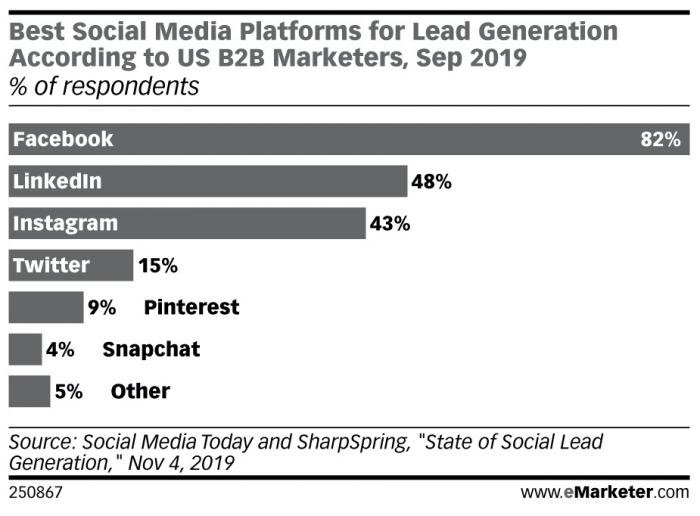
Within LinkedIn, you can preselect audience targeting characteristics to view your audience size. The more niche you go, the smaller your audience will likely get. The broader targeting options you choose, the larger your audience pool.
You can also target people using your first party data, current client list, or prospect list if the lists are large enough.
Facebook lead generation ads don’t offer as in-depth targeting opportunities as LinkedIn does for B2B organizations. Search Engine Journal has a great article explaining B2B targeting for Facebook specifically.
Strategy
Now, it’s time to lay out your plan of attack and start developing creative for your campaign. This is the point where we present our clients with a comprehensive strategy. The strategy acts as a guide for all efforts and provides transparency to stakeholders and internal teams.
ddm recommends a unique strategic direction for our clients. We like to run lead gen ads in conjunction with brand awareness ads. This strategy ensures new audiences seeing you for the first time aren’t bombarded with a request to turn over their email. We warm them up with brand awareness and then serve them a more mid-funnel resource.
We also suggest connecting lead generation strategies with sales team outreach. If your sales team is planning to email or visit prospects, we like to align our timing and messaging to support the sales team’s communication efforts.
Activate/Optimize
These two steps combined is where the rubber meets the road. The goals are set, the prep work is done, and the campaign is ready to start.
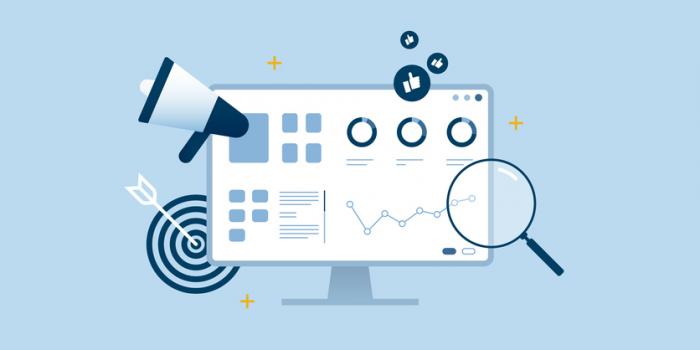
These steps are potentially the most critical. It’s where you find out if your messaging and creative truly resonates with your target audiences.
It’s important to monitor the performance of your lead generation ads to see if audiences respond positively. A set-it-and-forget-it mindset doesn’t work for social media lead generation. Pay attention to performance and optimize content when needed.
And when it’s all over, pay attention to the results. Share a campaign report and walk through your discoveries with key stakeholders. The best way to get buy-in for your next campaign is to prove the first one achieved your predetermined goals.
LinkedIn lead gen in action
At ddm, we practice what we preach. We use LinkedIn lead generation ads to attract leads and provide valuable content in return.
Here’s how the process works.
Step 1: Ad appears in LinkedIn feed
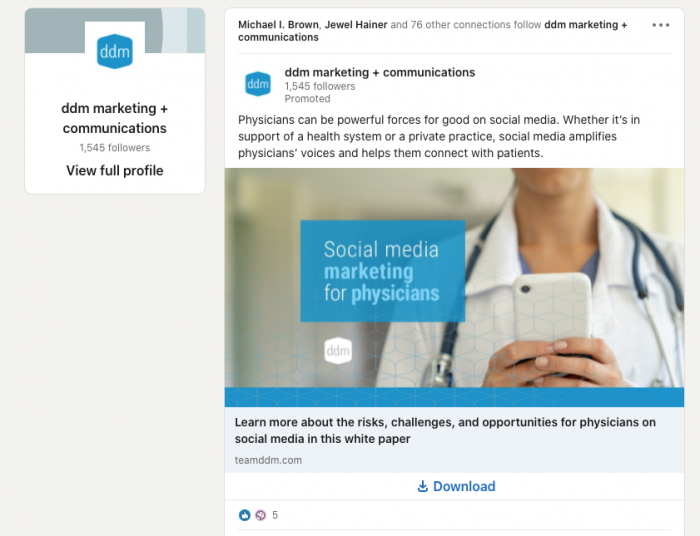
We target our ads to a very specific group of people who we believe will benefit from our white paper. The ads appear within our targets’ LinkedIn feed and look like the above image.
Users can either click the “download” button or the image itself to access the lead gen form.
Step 2: Click to reveal lead gen form
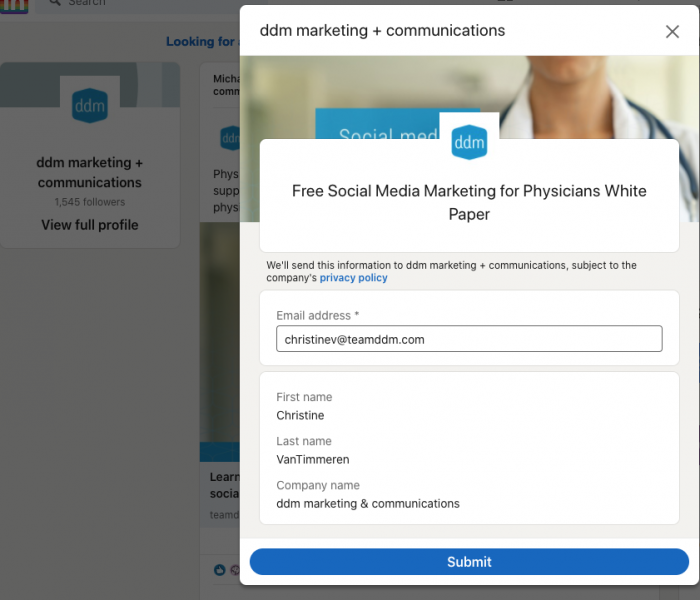
Our lead gen form requires audiences to provide their email address, first and last names, and company name. LinkedIn makes this step very easy and auto populates each person’s individual information. All our potential leads have to do is make sure the information is correct and click “submit.”
Step 3: Download option revealed
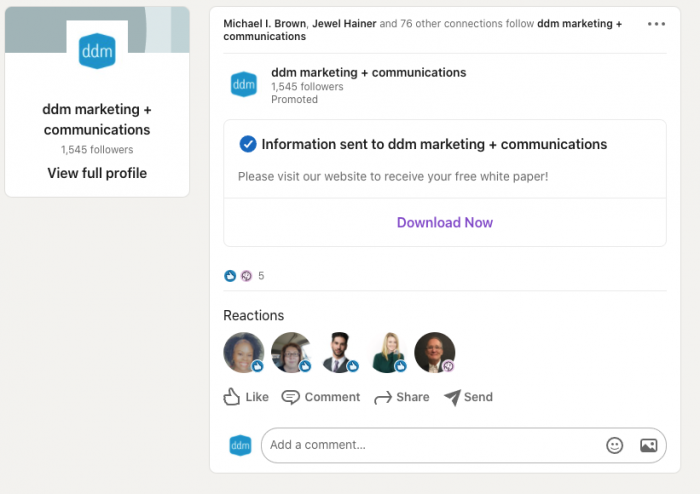
From there, the “download now” message pops up, letting the individual know his or her information was submitted.
Step 4: Directed to content destination
Clicking the “download now” link takes a user directly to ddm’s website to download the content to a device or computer.
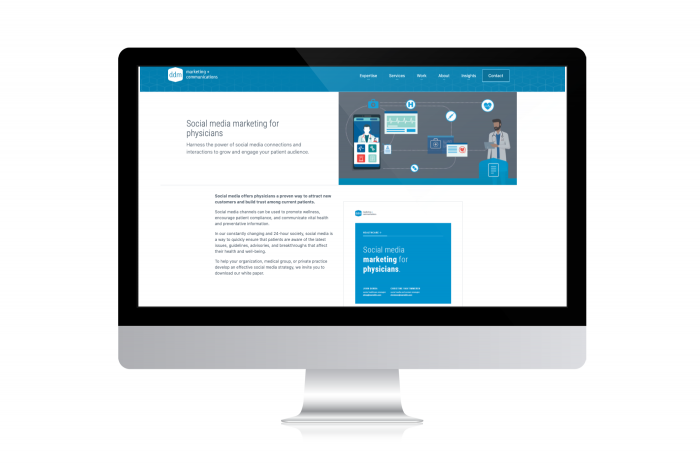
So now, we’ve not only captured the individual’s name and information, we’ve also directed them to our website to explore further if they choose. They can sign up for our newsletter, read a blog article, or reach out via our contact form.
Tracking leads
There’s nothing more fulfilling for our media and content teams than seeing leads come in through LinkedIn’s Campaign Manager. It means our content has value, which is our goal.
We want our target audiences to know us, trust us, and think of us the next time they have a marketing need.
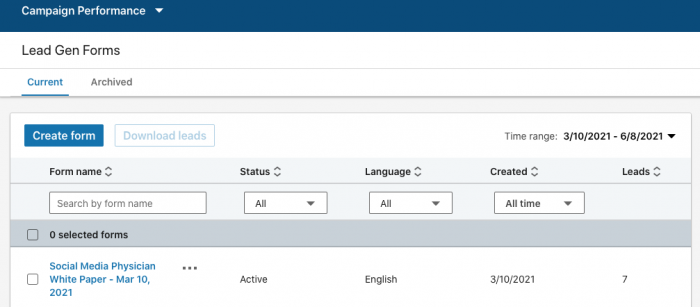
Treat your leads with respect
We take our lead generation a step further. Our Campaign Manager account is connected to our company’s CRM so we can nurture our leads and track our communications with them over time. We always qualify our leads and share them with our account teams.
But here’s the key: don’t overwhelm them with marketing communications. Remember, they may not be ready for your product or service quite yet. If you respect their information and allow them to opt in to hear more from you, your organization will be top of mind when the right time comes.
Ready to launch your lead generation campaign?
Our media team has decades of combined experience in planning and executing social media advertising campaigns. Email our team to get started: moc.mddmaet@gnitekram .
